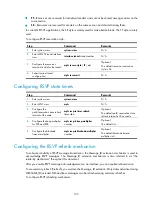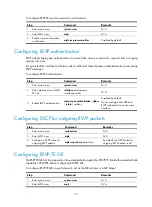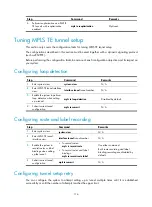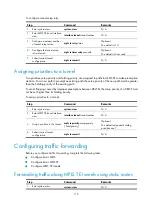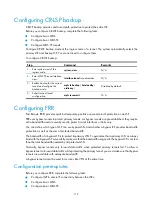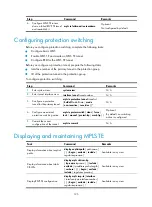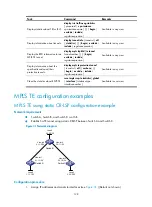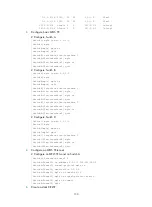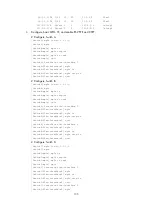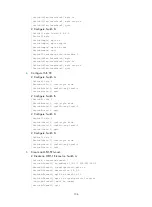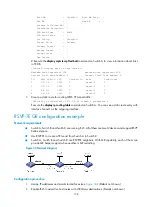
123
BFD control packet received from the egress. Upon detecting an MPLS TE tunnel failure, BFD triggers
protection switching to switch traffic to another tunnel.
A BFD session for MPLS TE tunnel detection can be static or dynamic.
•
Static
—If you specify the local and remote discriminator values by using the
discriminator
keyword
when configuring the
mpls te
bfd enable
command, the BFD session will be established with the
specified discriminator values. Such a BFD session can detect the connectivity of a pair of MPLS TE
tunnels in opposite directions (one from local to remote, and the other from remote to local) between
two devices.
•
Dynamic
—If you do not specify the local and remote discriminator values when configuring the
mpls te
bfd enable
command, the MPLS LSP ping will be run automatically to negotiate the
discriminator values and then the BFD session will be established based on the negotiated
discriminator values. Such a BFD session can detect the connectivity of a unidirectional (from the
local device to the remote device) MPLS TE tunnel between two devices.
After you enable BFD and configure the
mpls te failure-action teardown
command for an MPLS TE tunnel,
once an RSVP-TE tunnel failure occurs, BFD can detect the failure, and if RSVP does not re-establish the
tunnel within a specific period of time, MPLS TE removes the failed RSVP-TE tunnel and then re-establish
it.
Configuration guidelines
•
You cannot establish both a static BFD session and a dynamic BFD session for the same MPLS TE
tunnel.
•
After establishing a static BFD session for an MPLS TE tunnel, you cannot modify the discriminator
values of the BFD session.
•
If you enable both FRR and BFD for an MPLS TE tunnel, to make sure the BFD session is not down
during an FRR switching, you need to give the BFD detection interval a greater value than the FRR
detection interval.
•
In a BFD session for detecting an MPLS TE tunnel's connectivity, the ingress node always operates
in active mode and the egress node always operates in passive mode. The
bfd session init-mode
command does not take effect on the ingress and egress nodes of such a BFD session. Even if you
configure the two nodes to both operate in passive mode, the BFD session can still be established
successfully.
Configuration prerequisites
•
The source address of the BFD session is the MPLS LSR ID. Before configuring BFD to inspect an
MPLS TE tunnel, make sure that there is a route on the peer device to the MPLS LSR ID. You can also
configure the BFD session parameters on the tunnel interface as needed. For more information
about BFD, see
High Availability Configuration Guide
.
•
To establish a static BFD session to inspect an MPLS TE tunnel, make sure that there is already an LSP
from the local device to the remote device and an LSP from the remote device to the local device.
Configuration procedure
To configure BFD for an MPLS TE tunnel:
Step Command
Remarks
1.
Enter system view.
system-view
N/A

